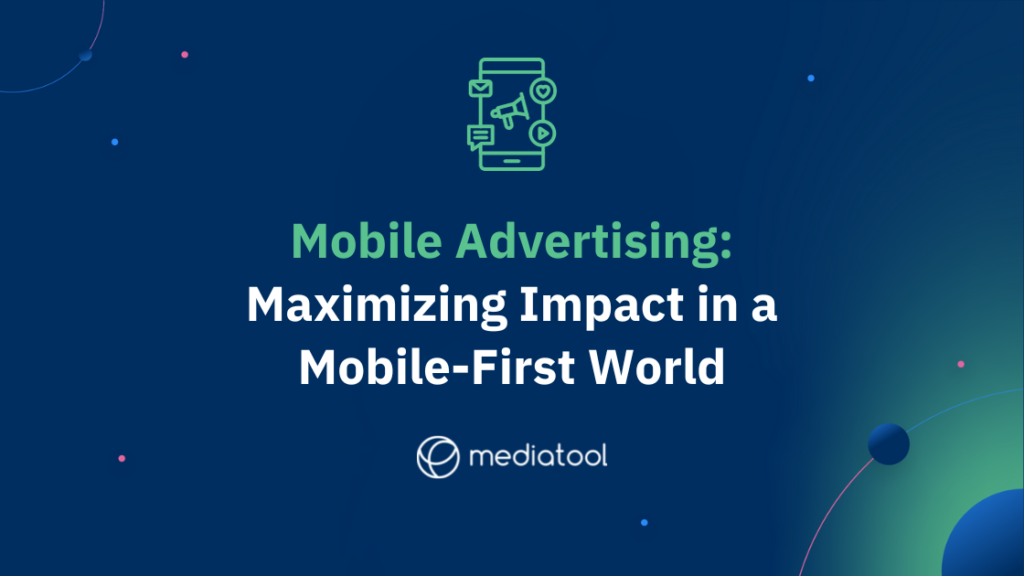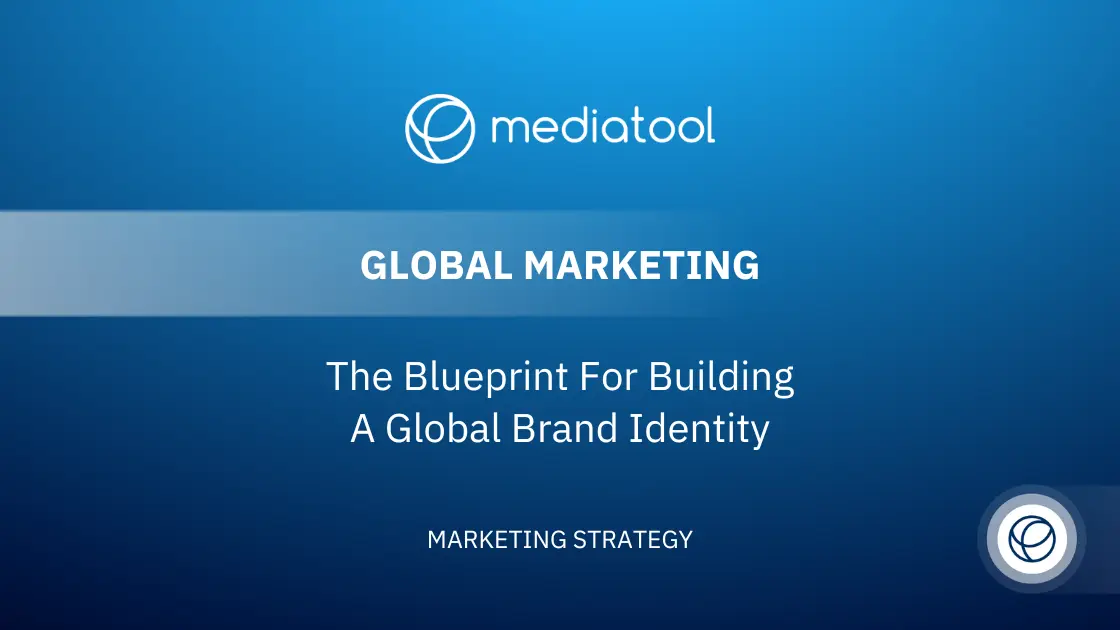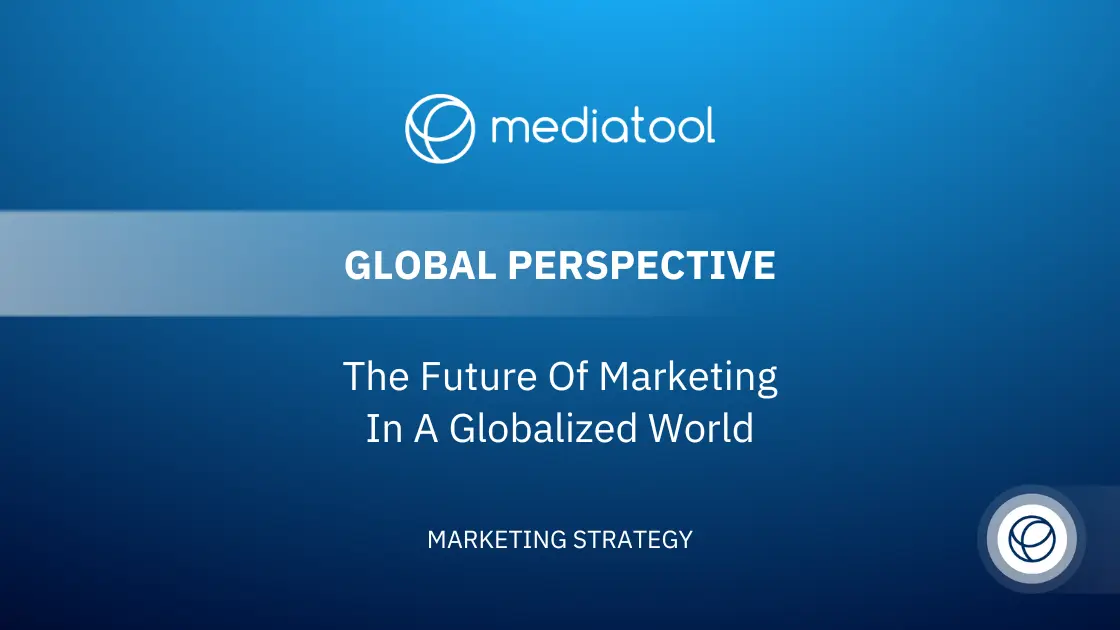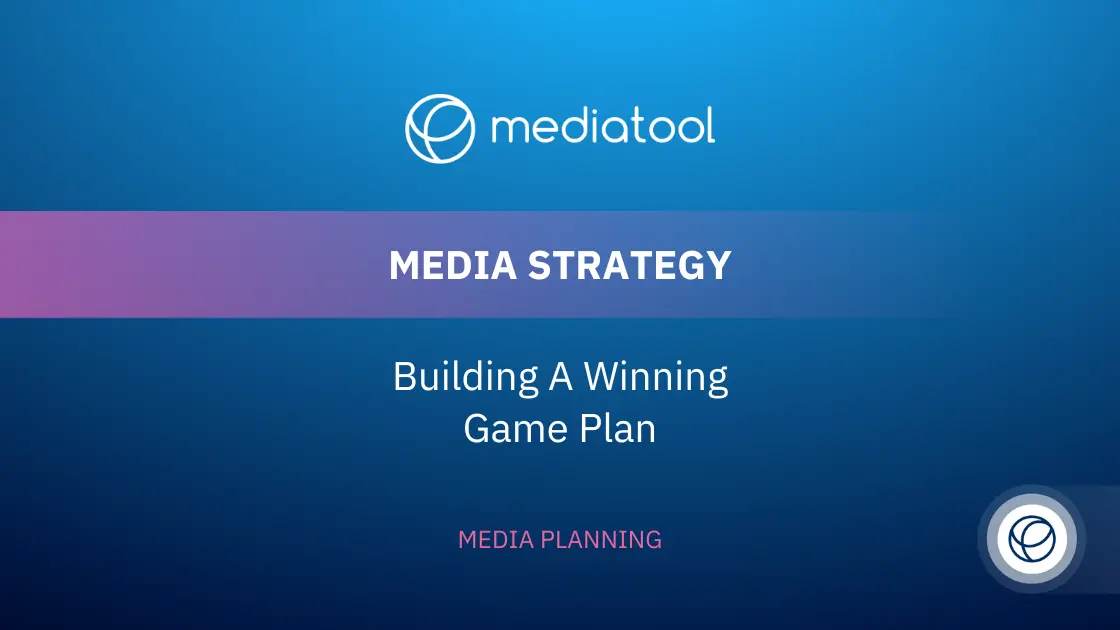In today’s digital era, businesses are pivoting from traditional advertising, like billboards, towards effective mobile engagement, given the ubiquity of smartphones. Mobile advertising offers extensive reach, but understanding its nuances can be complex.
Ever noticed ads related to your recent searches popping up on your feed? This showcases mobile advertising’s potential.
This article gets into its evolution, emphasizing its mix of tech and human touch.
We’ll explore its benefits, various formats, and top platforms, equipping you with a complete grasp of mobile advertising, beneficial for both businesses and the digitally curious.

What is Mobile Advertising?
If you’ve ever felt a twinge of surprise (or annoyance) when an ad for that pair of shoes you were eyeing pops up while catching up on the latest viral videos, you’ve been touched by the far-reaching fingers of mobile advertising.
But let’s backtrack a bit and see what this phenomenon truly encompasses.
Mobile advertising is the powerhouse child born from the union of technology and marketing. It’s not just about flashy banners or promotions; it’s a sophisticated blend of strategy, design, technology, and psychology, all focused on capturing the ever-diverting attention of mobile users. But how did this come about?
Think back to the earliest days of mobile phones. They were bulky, had monotone ringtones, and were purely functional. As technology evolved, so did these devices. Screens got bigger, resolutions clearer, and suddenly, a phone wasn’t just a phone anymore. It became a mini-computer, a personal assistant, and, most crucially for advertisers, a portal to the user’s personal space.
This transformation is precisely why mobile advertising is such a big deal. Let’s dissect its core elements:
Dynamic Nature: Unlike a billboard or a static magazine ad, mobile ads are ever-changing. They can be updated, rotated, and personalized based on data, ensuring fresh content.
Instant Gratification: Mobile ads are clickable. See a promo you like? Tap on it, and you’re whisked away to a world where that product can be yours in mere minutes.
Personal Touch: Mobile ads can be tailored to your preferences. Remember when you searched for ‘best sci-fi books’? Those subsequent ads for sci-fi novels weren’t a coincidence.
Feedback Loop: Advertisers don’t just send out ads into the void. They get feedback – clicks, views, purchases. This continuous data loop means they can refine their strategies in real-time.
Diverse Formats: From video snippets that tug at your heartstrings to playful interactive games promoting a product, the varied formats keep the user experience fresh and engaging.
While all this sounds very “business-y”, at its heart, mobile advertising is about storytelling. It’s about weaving a narrative that resonates with users. Whether it’s the tale of a perfect cup of coffee on a cold morning or the promise of adventure with a new pair of sneakers, it’s about connecting, compelling, and converting.
As we increasingly live our lives through the glow of our mobile screens, understanding the ins and outs of mobile advertising becomes not just a business necessity but a glimpse into the evolving dynamics of human-tech interaction. Intrigued yet? I bet you are!
What Are the Benefits of Mobile Advertising?
You’re on a crowded subway, and almost everyone is engrossed in their smartphone. Whether scrolling through news, chatting with friends, or conquering the latest mobile game, their attention is glued to that little screen. It’s a golden playground for advertisers, but why? Let’s explore the big perks of mobile advertising that make it a game-changer in the marketing world.
Ubiquity of Mobile Devices
Look around you. From teens to grandparents, almost everyone owns a mobile device, contributing to the nearly 6.7 billion smartphone mobile network subscriptions recorded worldwide in 2023. In total, there are over 5 billion mobile users across the globe. What does this mean for advertisers? A gigantic, diverse audience is eagerly waiting to be engaged.
In the United States alone, daily time spent on mobile devices saw a subtle increase, rising by 6 minutes in 2022 to reach an average of 4.5 hours per day. Unlike other platforms, mobile offers an unparalleled universality, making it an indispensable medium for reaching potential customers.
Precision Targeting
Remember the thrill when an ad seems to “read your mind”? That’s mobile advertising’s prowess. By analyzing user behavior, browsing patterns, and even location, ads can be tailored to resonate deeply with individual preferences. If you’ve ever wondered why you’re seeing ads for cat toys after searching for “how to stop my cat from scratching the couch,” now you know!
Real-time Engagement
With mobile advertising, there’s no waiting. See a tempting deal on that pizza? Tap the ad, place an order, and you’ll be biting into cheesy goodness in no time. This immediacy transforms passive viewers into active participants, enhancing conversion rates.
Cost-effectiveness
Print ads, TV commercials, and billboards can be expensive. Mobile advertising, however, offers a range of options suitable for any budget. In 2023, it’s anticipated that businesses worldwide will invest a whopping $362 billion in mobile advertising, highlighting its pivotal role in modern marketing strategies.
Plus, with the ability to instantly track ad performance, advertisers can ensure they get the best bang for their buck.
Flexibility and Adaptability
One of the true marvels of mobile advertising is its fluidity. If a campaign isn’t performing well, tweaks can be made in real time, allowing for agile adjustments to maximize effectiveness.
Rich Media
Mobile advertising isn’t just about text and images. Advertisers can leverage video, interactive content, augmented reality, and more to craft engaging stories. Short-form videos, often under a minute, are a potent tool, successfully capturing the attention of two-thirds of consumers.
Have you ever tried that AR feature in an ad that lets you virtually try on sunglasses? It’s a whole new level of engaging user experience!
Increased Brand Recall
Due to the intimate nature of mobiles, users tend to associate mobile ads more closely with their personal experiences. This familiarity can lead to higher brand recall, making it more likely for users to choose a particular brand when making purchase decisions.
Geo-targeting and Hyperlocal Advertising
Imagine walking near your favorite coffee shop and receiving a discount coupon immediately. Mobile advertising harnesses GPS technology, allowing businesses to send targeted ads based on a user’s precise location, making promotions hyper-relevant.
While these benefits highlight the significant advantages of mobile advertising, it’s essential to remember the human element. It’s not just about bombarding users with ads but offering value, understanding needs, and creating genuine connections. And when done right, mobile advertising does exactly that, merging the best of technology with the timeless art of storytelling.
Types of Mobile Advertising
Let’s take a closer look at the various mobile advertising formats. These formats range from straightforward banner ads to more complex video and interactive ads, each crafted to meet specific objectives and reach diverse audiences. Here’s a breakdown:
Banner Ads
These are the OGs of the mobile advertising world.
- What Are They? Small, rectangular ads typically at the top or bottom of mobile apps and websites.
- Why Use Them? They’re less intrusive and excellent for consistent brand visibility.
- Example: Playing a puzzle game, you see a colorful banner ad for a holiday sale.
- Mobile Ad Placement: Banner advertisements are a staple in mobile app ads.
Interstitial Ads
A dash of drama in the world of mobile ads!
- What Are They? Full-screen ads appearing at transitional moments, like between game levels.
- Why Use Them? Their size grabs attention and allows for creative expression.
- Example: After completing a game level, a full-screen movie trailer ad plays.
- Digital Advertising: Interstitial mobile ads are a dynamic form of digital advertising.
Video Ads
A little action, a little emotion; video ads have it all.
- What Are They? Brief video clips showcasing a product or service.
- Why Use Them? They’re effective for storytelling and boosting engagement.
- Example: A tech gadget is featured in a 15-second video ad on a news app.
- Mobile Video Ads: These ads are a crucial part of any mobile advertising campaign.
Native Ads
The chameleons of the mobile advertising world.
- What Are They? Ads that integrate seamlessly with the platform’s content.
- Why Use Them? They maintain the user experience and are less intrusive.
- Example: An article about home decor in a lifestyle app, sponsored by a furniture brand.
- Ad Campaigns: Native ads are a subtle, yet effective, choice for advertising campaigns.
In-app Ads
Tailored for the app enthusiasts!
- What Are They? Ads displayed within mobile applications.
- Why Use Them? They offer targeted advertising directly to app users.
- Example: Seeing an ad for protein supplements while using a fitness app.
- App Ads: In-app ads are a significant component of app advertising strategies.
Rewarded Ads
A little treat for your time!
- What are they? Users are offered rewards like virtual goods, extra lives, or premium content in exchange for viewing ads.
- Why use them? They incentivize users to engage with the ad, ensuring attention.
- Example: Watch a 30-second ad for a snack brand in a gaming app and get 50 bonus points.
Push Notifications

The gentle nudge in the world of mobile ads.
- What are they? Direct messages are sent to a user’s mobile device, even when the app isn’t open.
- Why use them? They can prompt immediate action and are effective for time-sensitive promotions.
- Example: You’ve abandoned a shopping cart in an e-commerce app, and a few hours later, you receive a notification about a 10% discount if you complete the purchase.
In each of these examples, advertisers carefully select mobile ad placement, taking into account the target audience and ad campaign objectives. From Google Ads to Apple Search Ads, these mobile advertisements can vary widely in terms of digital advertising costs, making it essential for businesses to consider their advertising budget and target mobile users effectively.
Rich media ads, including interactive and video content, have gained traction, offering immersive experiences. Meanwhile, SMS ads provide direct communication with potential customers. Advertisers measure the success of these campaigns using key performance indicators (KPIs), ensuring they reach customers effectively and make the most of their ad spend.
Understanding these various ad formats is crucial for anyone looking to launch a successful mobile advertising campaign. Each format, from interstitials to video ads, has its own unique strengths and can be used in tandem to create a robust, cost-effective advertising strategy on popular social media platforms and other mobile channels.
Each mobile ad type offers unique benefits tailored for different scenarios and target audiences. The trick for advertisers? Knowing which one to wield and when. It’s not just about visibility but about creating genuine connections, sparking interest, and driving action. And with these tools in their arsenal, advertisers have never been better equipped. Ready for some more ad-venture? Let’s keep going!
What Are the Most Popular Platforms for Mobile Marketing?
Hold onto your smartphones, folks! It’s time for a virtual tour of the hottest, most buzzing platforms in mobile advertising. Why does it matter? Well, where you place your ad can be just as critical as the ad itself. Not all platforms serve the same audience, nor do they cater to the same interests and behaviors. So, without further ado, let’s dive in!
With billions of active users, this social giant is like the Times Square of mobile advertising. From stories to news feeds to in-stream videos, there’s a plethora of ad formats to explore.
The Advantage: Hyper-targeted advertising. You can narrow your audience by age, location, interests, behaviors, and even life events. Remember when you got ads about wedding planners right after changing your relationship status? That’s Facebook’s ad magic.
Owned by Facebook, this visual-centric platform is about aesthetics, stories, and influencers. Perfect for brands with a strong visual identity.
The Advantage: High engagement rates, especially among younger audiences. Plus, features like shoppable posts make it a seamless shopping experience.
Google Ads
It’s Google! Google’s advertising capabilities are vast and versatile, from search ads to display networks.
The Advantage: Reach. Google’s network is enormous, encompassing not just search, but also websites, YouTube, and partner platforms. Plus, with their robust analytics, understanding ad performance is a breeze.
Snapchat
The land of filters, short-lived stories, and snappy content. It’s youthful, it’s trendy, and it’s tailor-made for brands targeting Gen Z.
The Advantage: Unique ad formats like AR lenses and filters. Remember turning your face into a taco for Taco Tuesday? That fun experience was brought to you by Snapchat’s ad genius.
Twitter (Now X)
The realm of hashtags, trending topics, and bite-sized content. Perfect for real-time marketing and brands with a strong voice.
The Advantage: Immediate reach and the potential for virality. Plus, with Twitter’s conversational nature, brands can engage directly with their audience.
TikTok
The new kid on the block that took the world by storm. Short, catchy videos, viral challenges, and a whole lot of dancing.
The Advantage: Massive engagement among younger audiences. The platform’s format encourages user-generated content, giving brands an opportunity for organic reach.
The professional network. It’s where B2B brands thrive, professionals connect, and industry news circulates.
The Advantage: Targeted advertising based on professional criteria. Want to reach CEOs in the tech industry? Or market a software tool to HR managers? LinkedIn’s your platform.
A visual discovery engine. It’s where DIY enthusiasts, brides-to-be, and foodies converge for inspiration.
The Advantage: High purchase intent. Users often come to Pinterest for ideas and inspiration, making it prime real estate for brands offering solutions and products.
Choosing the right platform is a mix of understanding your target audience, recognizing the platform’s strengths, and aligning it with your brand’s message and goals. With the mobile ad world constantly evolving, keeping a pulse on these platforms is key to staying ahead. So, which platform’s calling your name? The possibilities are as vast as the digital landscape itself. Dive in and make a splash!
How Do Advertisers Select the Right Platform for Their Mobile Ads?
Ever wondered how advertisers seem to magically pop up on your favorite apps or social platforms with the perfect ad just for you? It isn’t magic—it’s strategy. Picking the right platform for mobile ads isn’t a game of “Eeny, meeny, miny, moe.” It’s a careful, data-driven decision. So, how do the pros do it? Buckle up; we’re about to pull back the curtain!
Know Your Audience
Advertisers invest time in understanding their target audience’s habits. Are they tweeting their thoughts, pinning their inspirations, or dancing away on TikTok? The platform where your audience spends most of their time? That’s your golden ticket! Advertise there.
Identify Your Goals
What’s the end game? Brand awareness, website clicks, or direct sales? Different platforms cater to different objectives. Selling funky socks? Instagram’s visual vibe might be your jam. Launching a tech webinar? LinkedIn’s professional pulse is where you should be.
Budget Considerations
Advertisers often have to juggle budgets. In the United States, nearly 70% of the total expenditure on digital advertising is allocated to ads distributed through mobile devices. Platforms vary in ad costs, and getting the most bang for the buck is crucial. Facebook might offer vast reach, but if you’re a small business, local search ads on Google could give more value for your dollar.
Assess Platform Features
Each platform has unique ad formats and tools. Instagram’s shoppable posts, Snapchat’s AR filters, and Twitter’s polls—each offers a different flavor of engagement. Have a visually stunning product? Platforms that favor images or video will amplify your appeal.
Check Out the Competition
A little spying can go a long way! Advertisers often scout platforms to see where their competitors are advertising. If all your competitors are flocking to one platform, you might want to either join the party or find a less crowded space where you can shine.
Test and Learn
The mobile ad game is ever-evolving. Smart advertisers don’t just set and forget; they continually test ads across platforms and refine them based on performance. Ran an ad campaign on TikTok and it flopped? It’s a bummer, but not the end! Learn from it, tweak your strategy, and try again. Maybe Facebook’s your real playground.
Listen to Feedback

Customer feedback is gold. If users feel bombarded by ads on a platform or find them irrelevant, it’s a cue for advertisers to reassess. It’s not just about being seen but about being welcomed. If your ads feel jarring or out of place on a platform, it might be time to pivot.
Stay Updated
The digital landscape is dynamic. New platforms emerge, and old ones evolve. Advertisers need to have their fingers on the pulse.
Takeaway: Remember when no one knew what TikTok was? Now it’s an advertising powerhouse. Being adaptable and in-the-know can offer a competitive edge.
Conclusion
In today’s digital age, mobile devices have woven themselves into the very fabric of our daily lives, transforming how we engage with the world around us. This seamless integration has paved the way for mobile marketing to emerge as a dominant force in the advertising realm, reshaping the landscape of brand and user interaction. With the evolution of different types of mobile ads, from the classic banner ads to more dynamic video ads and immersive native ads, advertisers now possess a diverse toolkit to craft compelling mobile ad campaigns.
These campaigns are not just about populating mobile apps with banner advertisements or inundating users with SMS ads; they’re about devising a holistic mobile advertising strategy. The objective? To connect with potential customers by strategically placing mobile advertisements on platforms that resonate with them, be it on social media ads on Facebook and Instagram or through rich media ads on popular apps. The strategy also involves understanding the nuances of mobile ad placement, considering the mobile advertising costs, and maximizing the advertising budget to generate significant ad revenue.
With the growing prevalence of video content, video advertising, especially mobile video ads, has seen an exponential surge. Platforms like YouTube offer unique opportunities for video ads, blending the power of visual storytelling with the widespread reach of digital advertising. Native ads and interstitial mobile ads are gaining traction, ensuring users are engaged without feeling overwhelmed. Advertisers need to stay cognizant of the advertising campaigns’ effectiveness, gauging metrics like cost per engagement, and continually refining their approach.
At the heart of every successful mobile advertising campaign is a profound understanding of the audience’s needs and preferences. The expansive digital landscape, from mobile web browsing to engaging with social media ads, offers countless avenues for brands to share their stories. But it’s not just about telling a story; it’s about resonating, connecting, and converting. As we continue to navigate the intricate tapestry of mobile advertising strategies, the focus remains on creating genuine connections and providing value. After all, in the world of mobile advertising, it’s not just about visibility; it’s about making a lasting impact.





